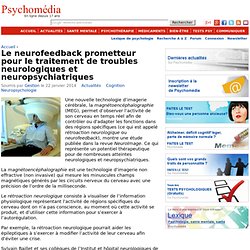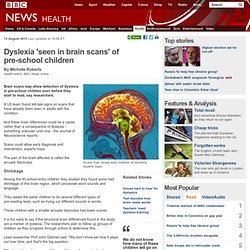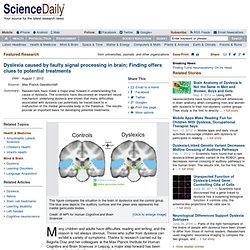

Age-related trends of inhibitory control in Stroop-like big–small task in 3 to 12-year-old children and young adults. 1Department of Special Needs Education, Faculty of Education, Tokyo Gakugei University, Tokyo, Japan2Japan Society for the Promotion of Science, Tokyo, Japan Inhibitory control is the ability to suppress competing, dominant, automatic, or prepotent cognitive processing at perceptual, intermediate, and output stages.

Inhibitory control is a key cognitive function of typical and atypical child development. This study examined age-related trends of Stroop-like interference in 3 to 12-year-old children and young adults by administration of a computerized Stroop-like big–small task with reduced working memory demand. This task used a set of pictures displaying a big and small circle in black and included the same condition and the opposite condition. In the same condition, each participant was instructed to say “big” when viewing the big circle and to say “small” when viewing the small circle. Keywords: inhibition, executive function, cognitive control, day–night task, Stroop. TDAH : Plus compliqué qu'il n'y paraît ? Le neurofeedback prometteur pour le traitement de troubles neurologiques et neuropsychiatriques.
Le rétroaction neurologique consiste à visualiser de l’information physiologique représentant l'activité de régions spécifiques du cerveau dont on n’a pas conscience, au moment où cette activité se produit, et d’utiliser cette information pour s’exercer à l’autorégulation.

Par exemple, la rétroaction neurologique pourrait aider les épileptiques à s’exercer à modifier l’activité de leur cerveau afin d’éviter une crise. News - Dyslexia 'seen in brain scans' of pre-school children. 13 August 2013Last updated at 19:54 ET By Michelle Roberts Health editor, BBC News online.

Neurological Differences Support Dyslexia Subtypes. Parts of the right hemisphere of the brains of people with dyslexia have been shown to differ from those of normal readers.

Researchers have used magnetic resonance imaging (MRI) to compare the two groups, and were able to associate the neurological differences found with different language difficulties within the dyslexic group. Cyril Pernet, from the University of Edinburgh, worked with a team of researchers to compare the brains of 38 people with dyslexia to a model 'typical brain' created by combining the scans of 39 normal readers. In all cases, differences could be seen in either the right cerebellar declive or the right lentiform nucleus. Recadrer sa perception du trouble du déficit de l'attention avec hyperactivité (TDA/H) Dyslexie et troubles du langage : de nouvelles découvertes génétiques.
Dyslexie et troubles du langage : de nouvelles découvertes génétiques Des chercheurs de l’université de Yale viennent d’apporter un nouvel éclairage sur les origines génétiques de la dyslexie et troubles du langage. Grâce à ces découvertes, on peut espérer un diagnostic plus précoce et des interventions plus rapides et efficaces ! La dyslexie est un trouble de l’apprentissage qui entraîne des compétences réduites en lecture et expression orale. Dyslexie: déceler le problème avant même que l’enfant apprenne à lire. Tackling dyslexia before kids learn to read. For children with dyslexia, the trouble begins even before they start reading and for reasons that don't necessarily reflect other language skills.

That's according to a report published online on April 5 in Current Biology, a Cell Press publication, that for the first time reveals a causal connection between early problems with visual attention and a later diagnosis of dyslexia. "Visual attention deficits are surprisingly way more predictive of future reading disorders than are language abilities at the prereading stage," said Andrea Facoetti of the University of Padua in Italy. The researchers argue that the discovery not only closes a long-lasting debate on the causes of dyslexia but also opens the way to a new approach for early identification and interventions for the 10 percent of children for whom reading is extremely difficult.
Those test results showed that kids who initially had trouble with visual attention were also the ones to later struggle in reading. Spotting dyslexia before a child starts school. Children at risk for dyslexia show differences in brain activity on MRI scans even before they begin learning to read, finds a study at Children's Hospital Boston.

Since developmental dyslexia responds to early intervention, diagnosing children at risk before or during kindergarten could head off difficulties and frustration in school, the researchers say. Findings appear this week in the online Early Edition of the Proceedings of the National Academy of Sciences. Marseille : la puce qui fait parler le cerveau. Dyslexia caused by faulty signal processing in brain; Finding offers clues to potential treatments. Many children and adults have difficulties reading and writing, and the reason is not always obvious.

Those who suffer from dyslexia can exhibit a variety of symptoms. Thanks to research carried out by Begoña Díaz and her colleagues at the Max Planck Institute for Human Cognitive and Brain Sciences in Leipzig, a major step forward has been made in understanding the cause of dyslexia. The scientists have discovered an important neural mechanism underlying dyslexia and shown that many difficulties associated with dyslexia can potentially be traced back to a malfunction of the medial geniculate body in the thalamus. The results provide an important basis for developing potential treatments. Wanze: un code couleur dans la cour de récré pour éviter les conflits. Diminuer les conflits entre élèves, à l'école, c'est possible.

Depuis une semaine, l'école communale de Wanze applique un concept basé sur un "code couleur" qui divise la cour de récréation en différentes zones d'activités et de jeux. Un concept qui a aussi pour objectif de prévenir le harcèlement en milieu scolaire. Pendant la récréation, Lucas, sept ans, aime jouer dans la zone jaune.